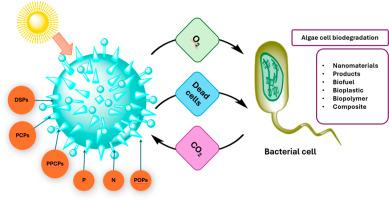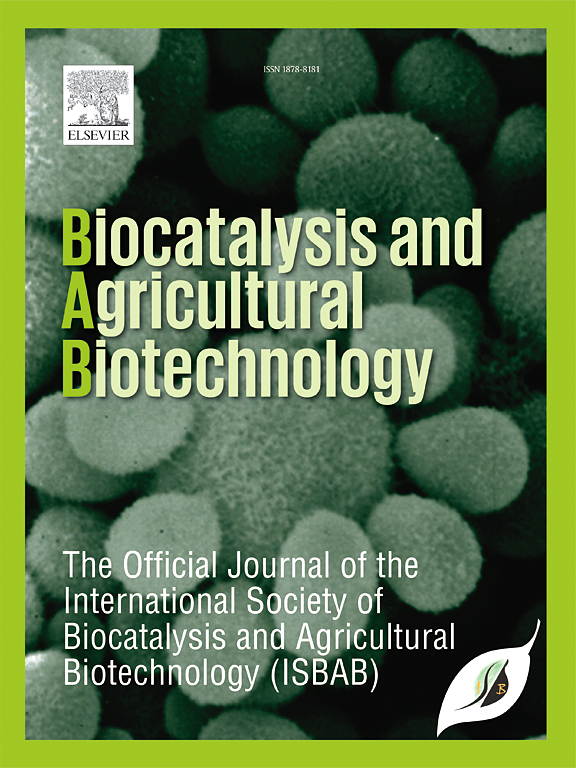用微藻类去除废水中的药物和个人护理产品 (PPCPs)
IF 3.4
Q2 BIOTECHNOLOGY & APPLIED MICROBIOLOGY
引用次数: 0
摘要
用于医药、化妆品、卫生和保健目的的物质都属于药品和个人护理产品(PPCPs)的范畴。由于其无处不在的生产、使用以及不小心将过期产品丢弃到环境中,它们成为公众关注的主要问题。在淡水系统、地下水和废水处理废水中,通常会检测到许多 PPCPs,包括抗生素、镇痛剂、内分泌干扰物和微生物/消毒剂,其含量从每升毫微克到每毫升毫克不等。此外,这些化合物通常具有持久性,会在生物组织中积累,最终进入农作物、蔬菜和饮用水源。由于许多 PPCPs 具有扰乱生态系统和/或危害健康的能力,因此被归类为 "新兴污染物"。本著作全面回顾了与水生和陆生栖息地中的 PPCPs 有关的发生、归宿以及可能的健康和环境危害方面的研究。虽然由于现有数据的局限性,可能无法进行全面评估,但本综述也涵盖了所报告的对人类造成危害或健康问题的案例。本综述旨在全面、重点突出地概述目前对去除药物和个人护理产品(PPCPs)的生物修复策略的理解,重点是大型藻类、微藻和水生大型藻类的应用。它研究了 PPCPs 的物理化学特性及其对环境和人类健康的潜在风险。此外,本综述还探讨了与更广泛应用藻类和水生大型藻类生物技术相关的潜力和挑战。这包括将这些生物技术的操作参数与去除 PPCP 的主要机制联系起来的研究工作。总之,藻类和大型水生植物为废水处理提供了前景广阔的生态友好型解决方案,大大有助于减轻 PPCP 污染。本文章由计算机程序翻译,如有差异,请以英文原文为准。

Microalgae to remove pharmaceutical and personal care products (PPCPs) from wastewater
Substances used for medicinal, cosmetic, hygiene, and health care objectives are included in the category of pharmaceuticals and personal care products (PPCPs). They are a major source of public concern because of their ubiquitous manufacturing, usage, and careless disposal of expired products into the environment. Many PPCPs, including antibiotics, analgesics, endocrine disruptors, and microbial/disinfecting agents, are commonly detected in freshwater systems, groundwater, and wastewater treatment effluents in amounts ranging from nanograms per liter to milligrams per milliliter. Additionally, these compounds frequently show persistence and accumulate in biological tissue, eventually finding their way into crops, vegetables, and drinking water supplies. Because many PPCPs are known to have the ability to upset ecosystems and/or provide health hazards, they are categorized as “emerging contaminants.” The research on the occurrence, fate, and possible health and environmental hazards related to PPCPs in both aquatic and terrestrial habitats is thoroughly reviewed in this work. It also covers reported cases of danger or health concerns in humans, although a full assessment may not be possible given the limitations of the data at hand. This review aims to provide a comprehensive and well-focused overview of the current understanding of bioremediation strategies for the removal of pharmaceuticals and personal care products (PPCPs), with an emphasis on the application of macroalgae, microalgae, and aquatic macrophytes. It examines the physicochemical properties of PPCPs and their potential risks to environmental and human health. Additionally, the review explores the potential and challenges associated with the broader application of biotechnologies employing algae and aquatic macrophytes. This includes research efforts to correlate the operational parameters of these biotechnologies with the primary mechanisms responsible for PPCP removal. In conclusion, algae and macrophytes present promising, eco-friendly solutions for wastewater treatment, significantly contributing to the mitigation of PPCP contamination.
求助全文
通过发布文献求助,成功后即可免费获取论文全文。
去求助
来源期刊

Biocatalysis and agricultural biotechnology
Agricultural and Biological Sciences-Agronomy and Crop Science
CiteScore
7.70
自引率
2.50%
发文量
308
审稿时长
48 days
期刊介绍:
Biocatalysis and Agricultural Biotechnology is the official journal of the International Society of Biocatalysis and Agricultural Biotechnology (ISBAB). The journal publishes high quality articles especially in the science and technology of biocatalysis, bioprocesses, agricultural biotechnology, biomedical biotechnology, and, if appropriate, from other related areas of biotechnology. The journal will publish peer-reviewed basic and applied research papers, authoritative reviews, and feature articles. The scope of the journal encompasses the research, industrial, and commercial aspects of biotechnology, including the areas of: biocatalysis; bioprocesses; food and agriculture; genetic engineering; molecular biology; healthcare and pharmaceuticals; biofuels; genomics; nanotechnology; environment and biodiversity; and bioremediation.
 求助内容:
求助内容: 应助结果提醒方式:
应助结果提醒方式:


